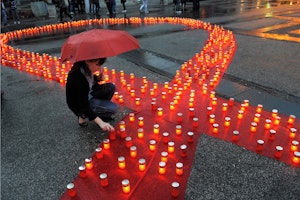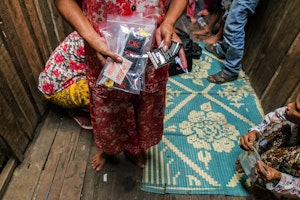Bulgaria’s Roma Pushing for Real Accountability in Health Care
By Erin Howe
Across Europe, Roma face greater health problems and less access to adequate health care than majority populations. European countries that have signed on to the Decade of Roma Inclusion have developed policies to improve the health of Roma populations, including strategies required by the European Commission for member states. Yet in reality, government progress reports may not include the voice and perspective of those who should benefit from these policies. A recent review of Roma integration strategies in the European Union found very little civil society participation, including of the Roma community, in developing policies and providing feedback on program implementation. Practically, this means that despite strong policy commitments, Roma are often not able to access the health services they need. This is particularly troubling considering that one third of Roma in their “productive years” (ages 35 to 54) experience health problems that limit their daily activities.
So how do we go about addressing this gap between developing policies and actually implementing them?
I recently visited a Bulgarian village where community members, with assistance from the Center for Interethnic Dialogue and Tolerance (AMALIPE), a Roma organization, have been monitoring the availability, accessibility, and quality of health services against specific government commitments related to maternal and child health and emergency medical services. They were using an approach called community monitoring, which involves working with communities to document and aggregate their experiences with health services and use the results to advocate for change. This approach aims to change the relationship between communities, service providers, and government officials to improve service delivery.
A key part of the community monitoring process is mobilizing communities to take action on issues that impact their lives. When I arrived in Bulgaria, I met community groups comprised of young people who were knowledgeable about the health problems their communities face and passionate about improving health care. Working with AMALIPE, these young volunteers completed two rounds of monitoring. They reached out to 500 women from four villages through door-to-door surveys and focus group discussions about the women’s experiences with health services.
AMALIPE and the volunteers found creative ways to share the results with their communities, including a dramatic reenactment called Doctor, Where Are You?. After seeing the play, several women shared their experience of being refused a no-cost childbirth at the hospital. With their support, AMALIPE approached authorities, including the Regional Health Inspectorate and the Health Insurance Fund, to ensure all women could access the right to free hospital delivery. As a result, the authorities have exerted greater oversight over doctors providing hospital-based services and invested in efforts to ensure underserved communities are aware of the health services guaranteed to be free of cost.
The monitoring process has already begun showing results with increased knowledge and health-seeking behavior among Roma communities and improved access to health services within the communities. By the second round of monitoring, more women could identify their local primary health care physician (an increase from 83 percent to 94 percent) and those not receiving annual health checks decreased (from 72 percent to 60 percent). In addition, there was a concrete reduction in payments for what were supposed to be free annual health checks (from 58 percent to 46 percent) and better response times from emergency medical services.
Community monitoring also helps to identify problems and barriers that cannot be resolved at the local level. For example, more than half of the women interviewed do not have health insurance. AMALIPE now plans to advocate with the national Ministry of Health and the Health Insurance Fund for a minimum package of health services for disadvantaged persons.
Moreover, community-based monitoring provides the opportunity for Roma communities to give feedback and recommendations for improvement on the services they receive. At the same time, it mobilizes communities to engage with service providers and policymakers in advocacy for improvements. The World Health Organization has worked with experts to develop criteria that can be used to ensure that national Roma integration strategies lead to concrete improvements in the health of Roma populations. These recommendations stress the importance of Roma community and civil society perspectives in monitoring integration strategies, and specifically highlight community-based monitoring as a source of information to determine whether programs and resources are reaching Roma communities.
The WHO is not alone in this recommendation. In June, AMALIPE along with several other Roma organizations organized a European Commission hearing to discuss how to build a comprehensive, multilayered, and participatory monitoring and evaluation system. As governments revise and implement their Roma integration strategies, the Open Society Foundations will join with AMALIPE, WHO, and others to urge policymakers to include components that solicit the experiences of Roma communities.
Without community voices, how will we know if we are truly making progress in improving the health of Roma communities?
Until April 2014, Erin Howe was a program officer for the Public Health Watch initiative of the Open Society Public Health Program.

